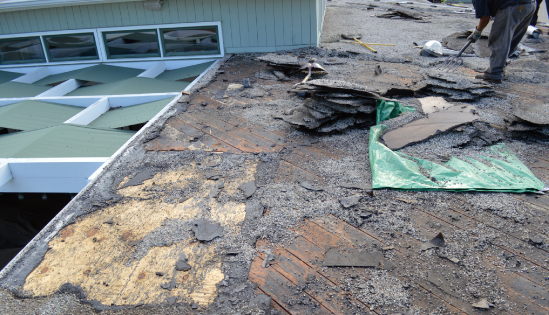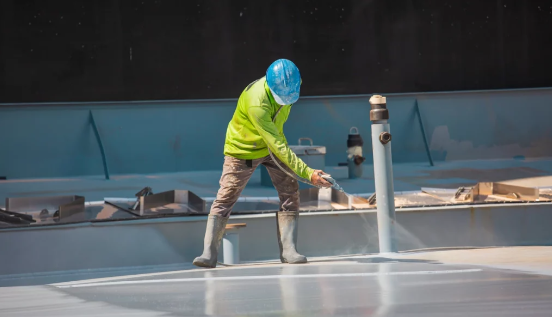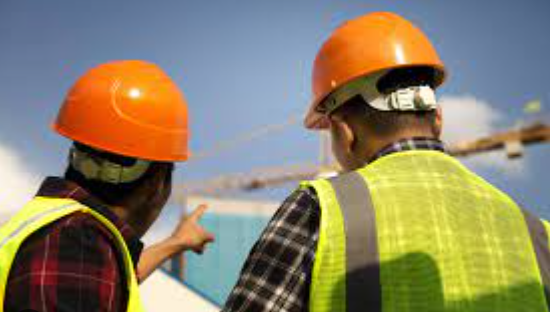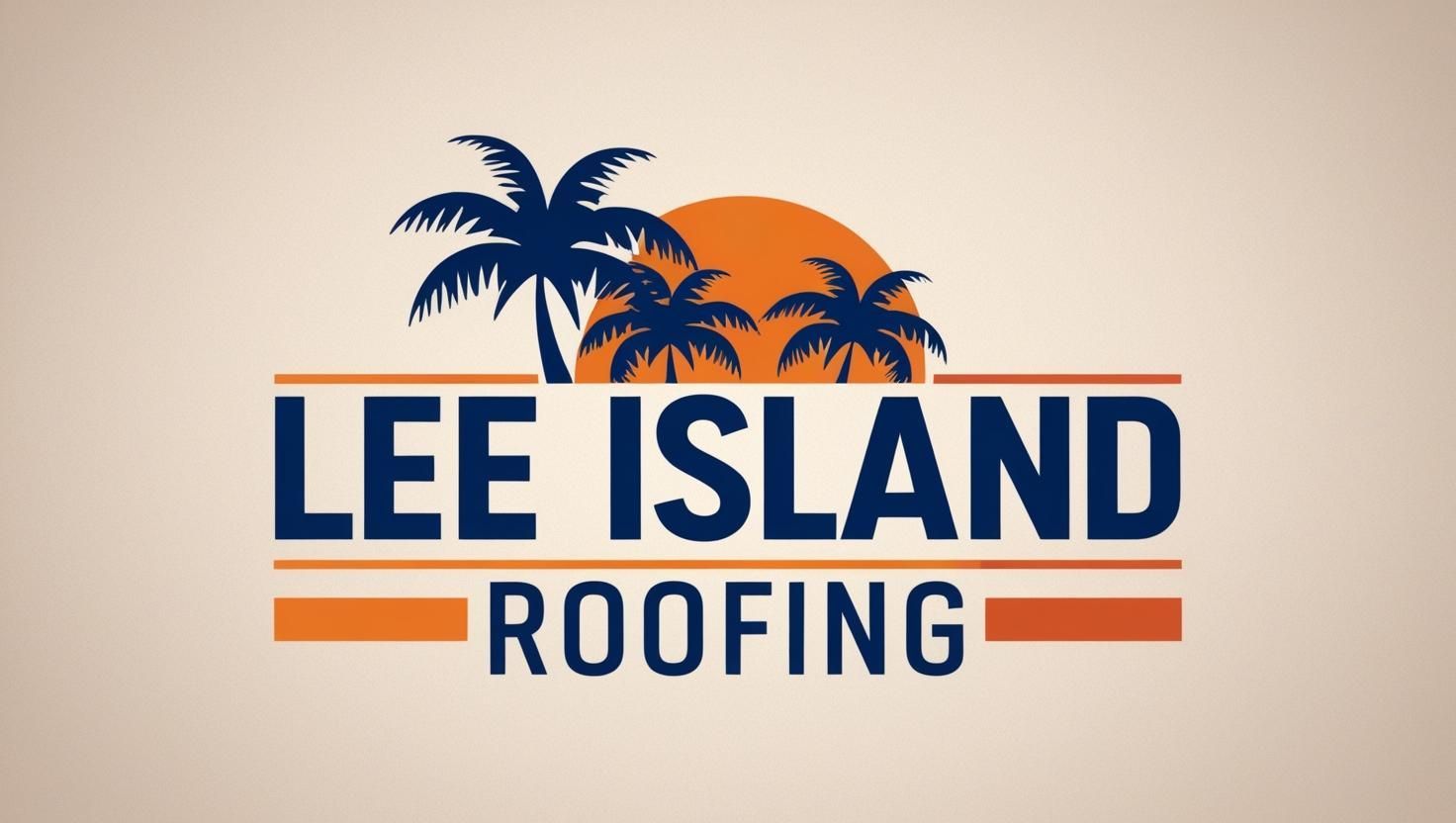Commercial Roofing Repair Process
Commercial roofing repairs are vital for maintaining the roofing systems of commercial buildings. These repairs can vary from minor fixes, like patching leaks, to major replacements of damaged sections. Timely repairs are important to prevent further damage, protect interiors, and ensure safety for occupants.
Common issues include leaks, punctures, cracks, blistering, ponding water, and membrane shrinkage, often caused by weathering, aging, or improper installation. Identifying the root cause is key to effective repairs.
Lee Island Roofing Contractors perform thorough inspections to assess damage and recommend repair solutions, which may involve patching, sealing, or replacing materials based on severity.
Regular maintenance and prompt repairs can extend the lifespan of a commercial roofing system, minimize costly damage, and preserve property value. Property owners should prioritize routine inspections and address issues swiftly to maintain roof integrity.

Clean Damaged Roof Area
We begin by clearing debris and dirt from the damaged area and its surroundings to ensure a clean workspace. Our technicians use professional-grade blowers and hand tools to remove loose shingles, granules, and other roofing detritus that might compromise adhesion. Once cleared, our team performs a thorough inspection to assess the extent of the damage and identify any underlying issues, carefully examining flashings, valleys, ridge caps, and membrane integrity.
This detailed evaluation allows us to determine the best repair approach, ensuring the damage is properly addressed from the decking up. Our certified roofers will check for compromised underlayment, water infiltration beneath the shingles, and potential issues with the roof's drainage system including gutters and downspouts.
Our meticulous process guarantees a durable, high-quality repair that restores your roof's integrity and protects your business. We utilize industry-leading materials compatible with your existing roofing system, whether it's EPDM, TPO, built-up roofing (BUR), or architectural shingles.
When repairing penetrations or addressing ponding water issues, we ensure proper slope and sealing to prevent future leaks. For commercial flat roofing systems, we verify that all seams are properly heat-welded or adhered according to manufacturer specifications. We pay special attention to the roof's perimeter, parapet walls, and any mechanical equipment curbs to ensure complete waterproofing. Our repairs are designed to withstand UV exposure, thermal cycling, and severe weather events, providing lasting protection for your investment.

Damaged Roofing Material Removal
We start by carefully removing the damaged roofing material to expose the affected area, beginning with a thorough tear-off process that includes lifting shingles, shake, or tiles without compromising the underlying decking or felt paper. Our experienced roofers use specialized roofing spades and pry bars to ensure precision during this critical demolition phase.
Once cleared, the section is repaired to ensure a strong, secure base, addressing any compromised roof sheathing, battens, or rafters that may have suffered water damage or rot. We replace damaged plywood decking and inspect the structural integrity of all joists and trusses in the vicinity.
The area is then meticulously prepped to create a clean and stable foundation for installing new roofing material, which includes applying appropriate underlayment such as synthetic felt, ice and water shield, or rubberized membranes depending on your roof's specific needs and local climate considerations. We ensure proper drip edge installation and flashing around all roof penetrations, valleys, and eaves.
Our precise approach ensures the new materials—whether architectural shingles, clay tiles, slate, or metal panels—are seamlessly integrated with proper overlaps, nailing patterns, and ridge ventilation systems. This restores the roof's durability and appearance while providing long-lasting protection against weather elements including wind-driven rain, hail impact, UV degradation, and seasonal thermal cycling. The completed repair includes proper counter-flashing at all wall intersections and chimney perimeters, with attention to maintaining proper attic ventilation ratios and ensuring all penetrations are properly sealed with approved roofing mastic or caulking compounds.

Replacement of New Roofing Material
We install new roofing material with precision, ensuring it matches the existing design and structure seamlessly. Our skilled team carefully aligns the new material with the current roofing system, maintaining a uniform appearance and structural integrity. Using high-quality materials and expert craftsmanship, we restore your roof to its original look while enhancing its durability and weather resistance. This meticulous process ensures a cohesive and long-lasting result that protects your home effectively.
Before beginning any installation, our certified roofers conduct a thorough roof deck inspection, checking for soft spots, water damage, or deteriorated decking that might compromise the integrity of your new roofing system. We meticulously prepare the substrate by removing any debris and ensuring proper ventilation through ridge vents, soffit vents, and attic fans to maximize your roof's lifespan and energy efficiency.
We specialize in all roofing applications—from architectural shingles and standing seam metal to slate, clay tiles, and TPO membrane systems for flat roofs. Our installation includes premium underlayment with ice and water shield along all eaves, valleys, and penetrations to prevent leaks from ice dams and wind-driven rain. We install drip edge flashing along all roof perimeters and ensure proper step flashing where roofing meets vertical walls.
Our master craftsmen take special care with all penetration flashings around chimneys, skylights, and plumbing vents, applying professional-grade sealants and metal counterflashing where needed. We follow strict nailing patterns according to manufacturer specifications to ensure your roofing materials achieve their rated wind resistance, often exceeding local building codes. Every installation culminates with a detailed final inspection, checking for proper shingle coursing, uniform reveals, and clean, straight ridge caps that enhance your home's curb appeal while providing decades of reliable protection.

Replace Roofing Sealant
Properly sealing all roofing components is vital to maintaining a durable and leak-free roof. Without adequate sealing, water can seep into vulnerable areas, leading to leaks, mold growth, and structural rot. These issues compromise your roof's integrity and can result in costly repairs. Regular inspections and professional sealing help prevent moisture damage, ensuring your roof remains strong and weather-resistant. Protect your business by prioritizing proper sealing for long-lasting security and peace of mind.
The integrity of your roofing system depends significantly on effective flashing installation around penetrations, valleys, and eaves. Professional roofers understand that proper underlayment combined with quality sealants creates a waterproof barrier that protects the decking from moisture infiltration. Ridge vents and soffit ventilation work in tandem with proper sealing to maintain optimal attic conditions, preventing condensation that can compromise your shingles and rafters.
When examining a roof's condition, experienced contractors look for signs of membrane deterioration, particularly along parapet walls and at the drip edge where water runoff is most concentrated. EPDM and TPO membranes require specialized sealing techniques at the seams to maintain watertight conditions throughout their service life. Bituminous materials like modified bitumen and built-up roofing systems need careful attention to lap joints where water intrusion commonly occurs.
Ice dam formation in colder climates can force water beneath improperly sealed shingles, making proper starter strip installation and ice-and-water shield application critical preventative measures. Counter-flashing must be properly embedded in masonry and sealed with appropriate caulking to prevent moisture from migrating behind the primary flashing. Remember that your fascia boards and soffits are integral components of your roofing system that require proper sealing to prevent water damage to your building envelope.

Final Inspection
A comprehensive final inspection is meticulously conducted by the experienced roofing foreman and key business stakeholders to ensure every identified damaged area has been properly repaired according to industry specifications. This collaborative walkthrough allows all parties to thoroughly review the completed work, verify that repairs meet or exceed expectations, and address any remaining concerns before project closure. The inspection team carefully examines the roof deck, shingle coursing, ridge caps, flashing details, and all penetration points to confirm proper installation and weatherproofing.
Special attention is given to critical areas such as valleys, eaves, and chimney flashings where water intrusion is most common. The team checks for proper nail placement, adequate underlayment installation, and appropriate ventilation to ensure the roof system functions as a cohesive unit. Ice and water shield barriers are verified in vulnerable zones while downspouts and gutters are inspected for proper drainage capacity.
The inspection also confirms that all necessary ridge venting is correctly installed to maximize airflow and minimize moisture buildup in the attic space. Drip edges are examined to ensure water properly sheds away from fascia boards and soffits. Any necessary counterflashing against adjoining walls is verified for secure attachment and appropriate overlap with step flashing.
This meticulous attention to detail and clear communication between contractors and stakeholders ensure complete customer satisfaction with the finished project. The thorough inspection process guarantees that the roof system is fully restored to optimal condition, structurally sound, properly sealed, and ready to provide long-lasting, weather-tight protection for the business property and its valuable assets for years to come.
Frequently Asked Questions
Got questions about commercial roofing repairs? We’ve got answers! Here are some of the most common inquiries we receive from our clients.
What are the signs that my commercial roof needs repairs?
Look for water stains on ceilings, missing shingles, or visible wear and tear. If you notice any of these signs, it’s time to call us for a professional assessment.How long do commercial roofing repairs take?
The duration of repairs can vary based on the extent of the damage. Minor repairs may take a few hours, while more extensive work could take several days. We’ll provide a timeline during our initial consultation.What types of roofing materials do you work with?
Explore OptionsWe handle a variety of common commercial roofing materials including Single-Ply, Metal, Bitumen, and Built-Up (Tar). Our team can help you choose the best option for your building’s needs.
Do you offer warranties on your repairs?
Yes, we provide warranties on our roofing repairs to ensure your peace of mind. Details will be discussed during your consultation.How can I maintain my commercial roof?
Regular inspections and maintenance are key. Keep gutters clear, check for debris, and schedule professional inspections at least twice a year.
What is the commercial roof repair process?
The commercial roof repair process typically begins with a thorough inspection to assess the damage. After identifying the issues, we’ll provide a detailed estimate and discuss the best repair options. Once approved, our team will schedule the repair work, ensuring minimal disruption to your business operations.Learn MoreHow much does commercial roof repair cost?
Material Average CostsThe cost of commercial roof repair can vary widely based on factors such as the type of roofing material, the extent of the damage, and the complexity of the repair. Lee Island Roofing provides free estimates to give you a clear idea of the costs involved.
Do I need to be present during the repair?
While it’s not necessary for you to be present during the repair, we recommend being available for any questions or decisions that may arise. Our team will communicate with you regularly to keep you updated on the progress.
Need More Help?
If you have more questions or need assistance, don’t hesitate to reach out to us. Our team at Lee Island Roofing is here to help!
